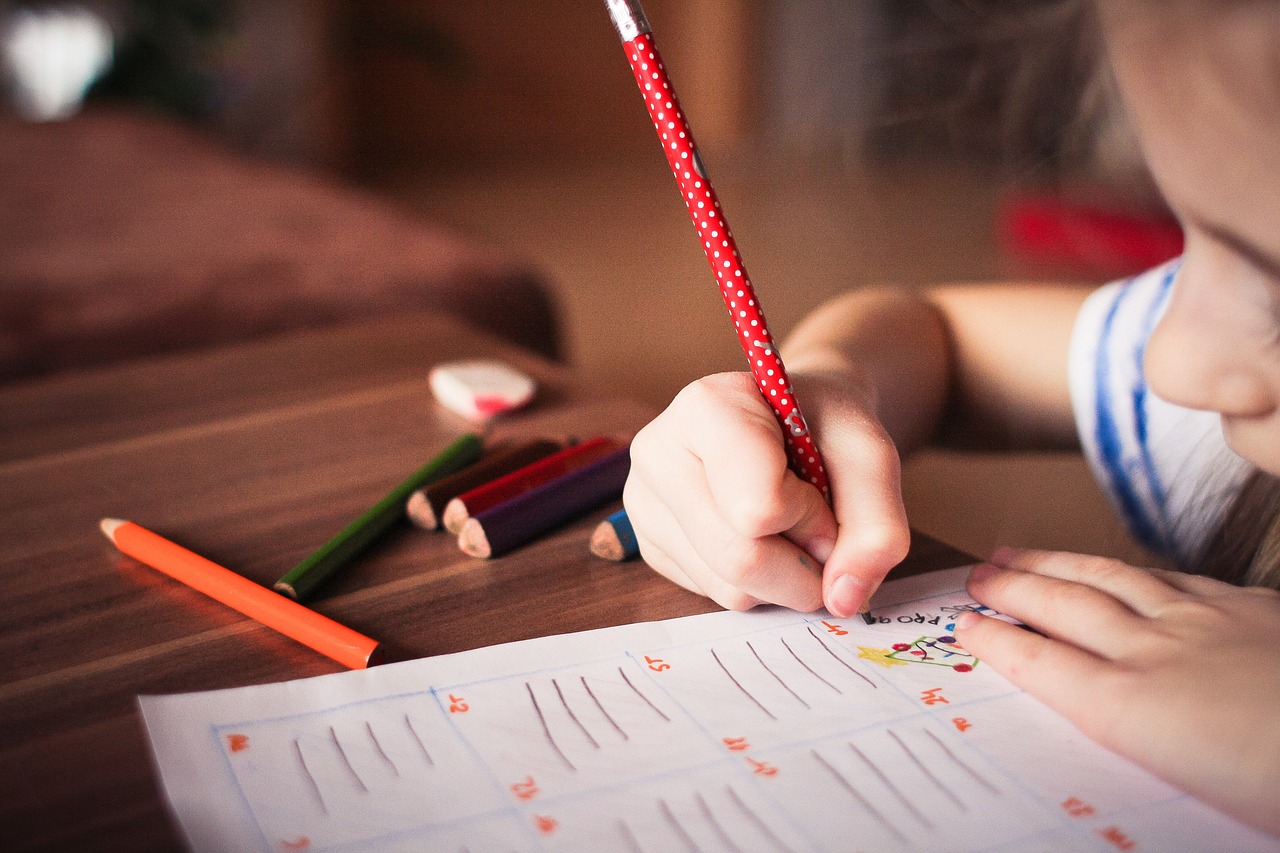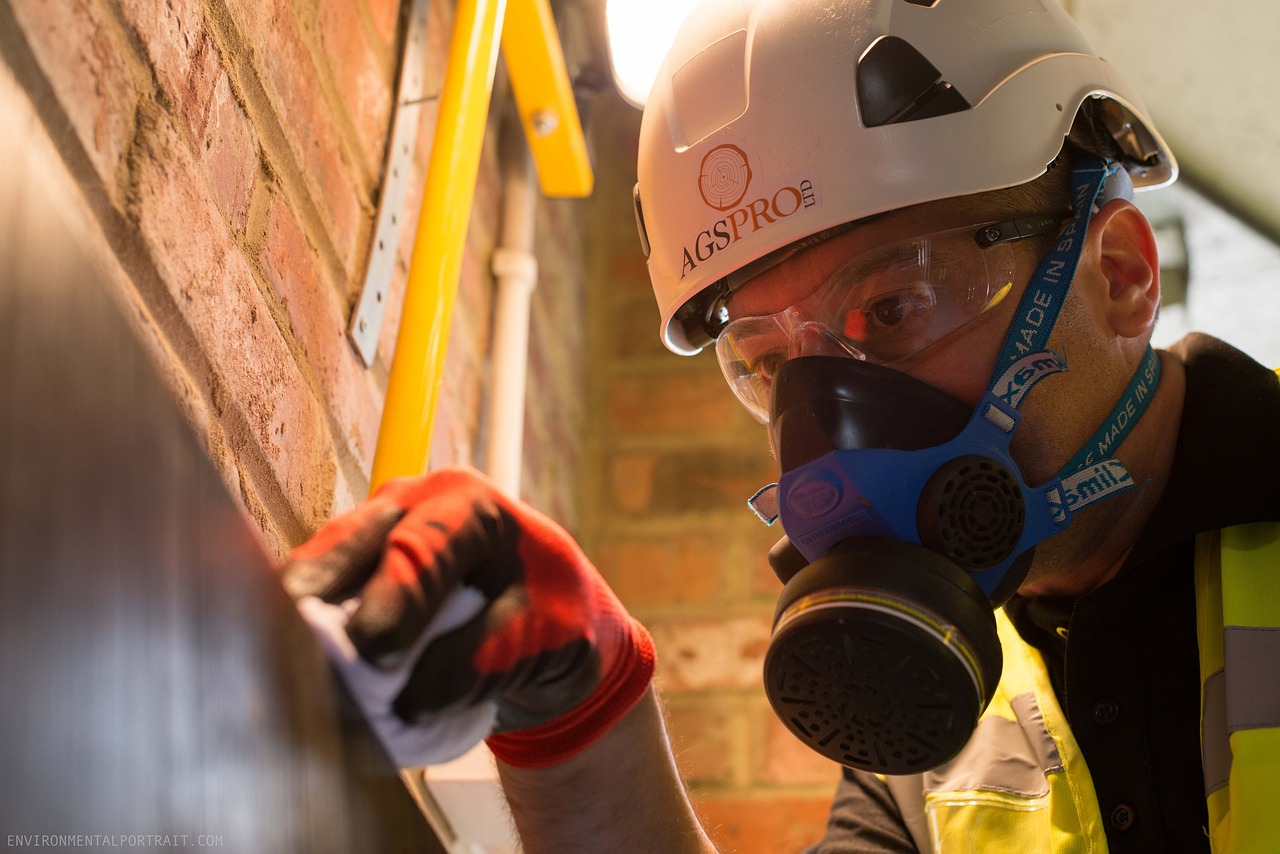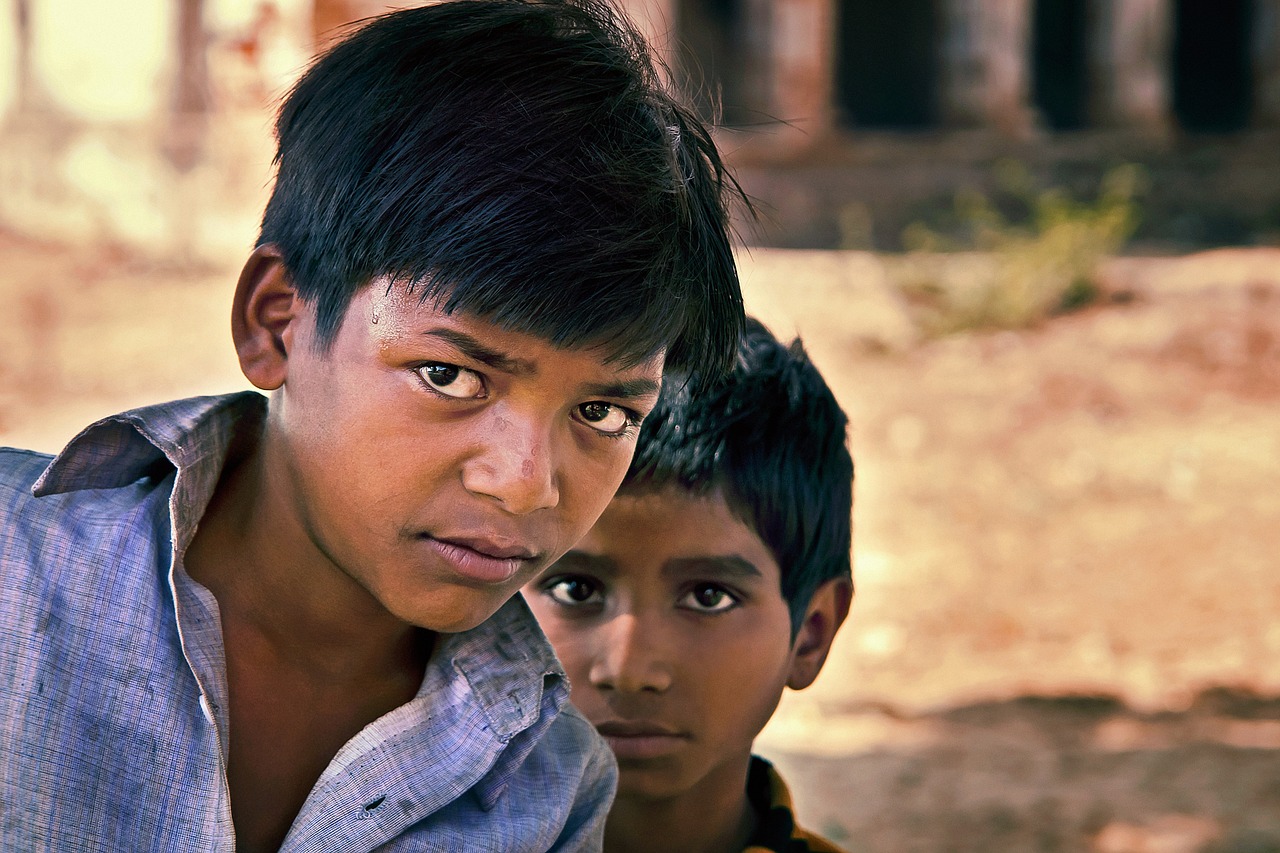Should Children Have Internet Privacy?
In today's hyper-connected world, the question of whether children should have internet privacy is more pressing than ever. With the internet being an integral part of their daily lives, children are exposed to a vast array of information and experiences, both positive and negative. As parents, educators, and guardians, we often find ourselves grappling with the dilemma of how to protect our children while allowing them the freedom to explore the digital landscape. It's a bit like walking a tightrope—too much control can stifle their independence, while too little can expose them to potential dangers.
Imagine letting your child roam through a bustling marketplace without any guidance. Sure, they might discover some wonderful things, but they could also wander into dangerous areas. Similarly, the internet offers a treasure trove of knowledge and entertainment, but it also harbors risks such as cyberbullying, inappropriate content, and online predators. Thus, the challenge lies in striking a balance that allows children to experience the benefits of the internet while ensuring their safety and privacy.
One of the fundamental aspects of internet privacy for children is understanding that it is not just about keeping secrets; it's about creating a safe space where they can learn and grow. Privacy fosters a sense of security, allowing children to express themselves without fear of judgment. When children know that their personal information and online activities are protected, they are more likely to engage positively with technology. This sense of security is paramount as they navigate social interactions, educational resources, and even their identities in the digital realm.
Moreover, as children grow older, the concept of privacy becomes increasingly complex. They begin to develop their own online identities, which can sometimes clash with parental expectations. This is where communication becomes crucial. Parents must engage in open dialogues with their children about what privacy means and why it matters. Encouraging children to voice their thoughts on internet privacy can empower them to make informed decisions about their online presence.
In essence, internet privacy for children is not merely a protective measure; it is an essential component of their development in the digital age. By understanding and respecting their need for privacy, we can help them cultivate a healthy relationship with technology. As we navigate this intricate landscape together, let's remember that our ultimate goal is to guide our children toward becoming responsible digital citizens who can thrive both online and offline.
- Why is internet privacy important for children? Internet privacy is crucial for protecting children from online threats, ensuring their emotional well-being, and allowing them to explore the digital world safely.
- How can parents balance control and independence? Parents can monitor their children's online activities while fostering independence by engaging in open discussions and setting appropriate boundaries.
- What tools can help with parental control? There are various parental control tools available, including content filtering software, monitoring applications, and time management tools.
- How can schools contribute to internet privacy education? Schools can incorporate digital safety into their curriculum, teaching students about privacy, cyberbullying, and responsible online behavior.
- What are the current laws regarding internet privacy for minors? Legislation is evolving, with various laws aimed at protecting children's online data, which impacts parents, schools, and tech companies.

The Importance of Internet Privacy for Children
In today's hyper-connected world, where every click can be tracked and every post can be scrutinized, understanding internet privacy is more crucial than ever, especially for our children. Imagine a vast ocean filled with opportunities and dangers alike; without a sturdy boat (or a solid understanding of privacy), children can easily find themselves adrift in treacherous waters. The implications of online exposure are profound, affecting not only their emotional well-being but also their ability to navigate the digital landscape safely.
Children often lack the maturity to fully comprehend the risks associated with sharing personal information online. They might not realize that a seemingly innocent photo or comment could lead to unintended consequences. This lack of awareness can make them vulnerable to threats such as cyberbullying, online predators, and even identity theft. Therefore, it is vital for parents and guardians to instill a sense of digital awareness in their children, equipping them with the tools to protect themselves in the vast digital realm.
Moreover, the impact of online exposure extends beyond immediate safety concerns. It can have lasting effects on a child's self-esteem and mental health. For instance, a child who experiences cyberbullying may suffer from anxiety, depression, or even social withdrawal. This is why fostering a strong understanding of internet privacy is not just about keeping children safe; it's about nurturing their overall development and emotional resilience.
To illustrate the importance of internet privacy, consider the following statistics:
| Statistic | Implication |
|---|---|
| 60% of children have experienced cyberbullying. | This highlights the urgent need for protective measures. |
| 70% of children share personal information online. | This shows a lack of understanding of privacy risks. |
| Over 40% of kids have encountered online predators. | This underscores the necessity of educating children about online dangers. |
In summary, ensuring internet privacy for children is not merely a parental duty; it's a societal responsibility. As we navigate the complexities of the digital age, we must prioritize teaching our children about online safety, empowering them to make informed decisions about their personal information. By doing so, we can help create a generation that is not only tech-savvy but also aware of the importance of protecting their privacy in an ever-evolving digital landscape.

Parental Control vs. Child Independence
In the ever-evolving digital landscape, the tug-of-war between parental control and child independence is more relevant than ever. As children explore the vast realms of the internet, parents grapple with the need to protect them while also allowing them to grow into self-sufficient individuals. It’s a fine line to walk, much like balancing on a tightrope—too much control can stifle a child's growth, while too little can expose them to risks.
Imagine a young bird learning to fly. If the parent bird hovers too close, the fledgling may never gather the courage to spread its wings. Conversely, if the parent flies too far away, the young bird might crash into unseen dangers. Similarly, parents must find a way to monitor their children's online activities without encroaching on their independence. This can be a challenging endeavor, especially when considering the myriad of threats lurking in the digital shadows.
To strike this balance, parents can implement various strategies that allow for oversight while promoting autonomy. For instance, setting clear rules about internet use can create a safe environment for children. These rules might include:
- Establishing time limits for screen usage
- Designating specific areas in the home for internet use
- Encouraging open discussions about online experiences
These guidelines not only help children understand the boundaries but also foster an atmosphere of trust. When children feel they can share their online experiences without fear of judgment or punishment, they are more likely to approach their parents with concerns about privacy or safety.
Moreover, parents can utilize parental control tools that allow for monitoring without being intrusive. These tools can help track online activity, filter inappropriate content, and manage screen time. However, it’s essential for parents to communicate the purpose of these tools to their children. Instead of presenting them as a means of surveillance, they can be framed as protective measures that help children learn to navigate the internet safely.
Ultimately, the goal should be to empower children to take charge of their online presence while ensuring they have the guidance and support they need. This approach not only enhances their understanding of internet privacy but also equips them with the skills necessary to make informed decisions as they grow. As they transition into adolescence and beyond, this foundation will serve them well in managing their online identities.
In summary, the relationship between parental control and child independence is complex, requiring careful consideration and open communication. By creating a supportive environment that values both safety and autonomy, parents can help their children thrive in the digital age while safeguarding their privacy.
1. How can I ensure my child understands the importance of internet privacy?
Engage in open conversations about online safety, share real-life examples, and encourage them to ask questions about what they encounter online.
2. What are some effective parental control tools?
Popular tools include Net Nanny, Qustodio, and Circle Home Plus, which offer features like content filtering and activity monitoring.
3. How can I balance monitoring my child's internet use without invading their privacy?
Set clear guidelines, maintain open communication, and explain the reasons behind monitoring tools to foster trust and independence.

Understanding Parental Control Tools
In today's digital landscape, where the internet is as ubiquitous as air, understanding parental control tools is essential for any parent who wants to keep their children safe online. These tools act as a protective shield, allowing parents to monitor their children's online activities while still giving them the freedom to explore. It's like having a safety net that ensures kids can enjoy the circus of the internet without falling into dangerous traps.
So, what exactly are these tools? They range from simple applications that filter content to sophisticated software that tracks online behavior. The key is to find the right balance between supervision and independence. For instance, some tools allow parents to block certain websites that may contain inappropriate content, while others can set time limits for usage, ensuring that children don’t spend endless hours glued to the screen. This way, parents can encourage a healthy relationship with technology while safeguarding their kids from potential risks.
Here are some common functionalities of parental control tools:
- Content Filtering: This feature helps block inappropriate websites and content, ensuring that children only access age-appropriate material.
- Activity Monitoring: Parents can track their child's online activities, including the websites they visit and the apps they use, providing insights into their digital habits.
- Time Management: Setting limits on screen time helps children develop a balanced approach to technology use, promoting outdoor play and face-to-face interactions.
- Location Tracking: For mobile devices, some tools offer GPS tracking, allowing parents to know where their children are at all times.
However, while these tools can be incredibly beneficial, they also come with their own set of challenges. For example, overly restrictive measures may lead to feelings of resentment or rebellion among children. It's crucial for parents to communicate openly with their kids about why these controls are in place. Instead of viewing them as a way to invade privacy, children should see them as a means of ensuring their safety. Think of it as a parent holding their child's hand while crossing a busy street—it's all about protection without stifling independence.
Moreover, the effectiveness of these parental controls depends significantly on the age and maturity of the child. Younger children may require more stringent measures, while teenagers might benefit from a more nuanced approach that encourages responsible decision-making. As children grow, parents should adapt their strategies, transitioning from strict monitoring to fostering trust and open dialogue. This evolution in approach not only helps maintain a healthy parent-child relationship but also prepares kids for the real world, where they will need to navigate online spaces independently.
In conclusion, understanding parental control tools is a vital step for any parent navigating the complex waters of the digital age. By utilizing these tools wisely and maintaining open communication with their children, parents can create a safe online environment that promotes both security and independence. After all, the goal is not just to protect children but to empower them to become responsible digital citizens.

Types of Parental Controls
When it comes to keeping our children safe online, understanding the available is essential. These tools can be a parent’s best ally, acting like a digital shield that helps protect children from the vast and sometimes dangerous world of the internet. However, not all parental controls are created equal, and knowing which ones to use can make all the difference in ensuring a safe online experience for your kids.
There are three primary categories of parental control tools that cater to various needs and preferences: content filtering, monitoring software, and time management tools. Each type serves a unique purpose and can be tailored to fit the specific requirements of your family.
Content filtering tools are designed to block inappropriate websites and content. Think of them as a digital gatekeeper that only allows access to age-appropriate material. For instance, many internet service providers and third-party applications offer customizable filters that can be adjusted based on your child's age or maturity level. These filters can help parents feel secure knowing that their children are not stumbling upon harmful or explicit content while browsing the web.
Monitoring software takes a different approach by keeping track of your child's online activities. This type of control allows parents to see what websites their children visit, whom they interact with, and even the content they share on social media. While some parents may feel uneasy about monitoring their children’s online presence, it can serve as a valuable tool for initiating conversations about safe internet practices. However, it’s crucial to strike a balance; constant surveillance may lead to feelings of mistrust or invasion of privacy.
Time management tools help parents set limits on how long their children can spend online. These tools can be particularly beneficial in fostering a healthy relationship with technology. By establishing designated screen time, parents can encourage their children to engage in other activities, such as outdoor play or family time. Many devices come with built-in features that allow parents to set daily limits or schedules, ensuring that technology use is balanced and responsible.
While these tools are incredibly useful, it's essential to approach their implementation with care. Open communication is key; discussing the reasons behind these controls with your children can help them understand their importance. Rather than viewing parental controls as a means of restriction, children should see them as part of a broader strategy to keep them safe online. This approach fosters trust and encourages children to practice responsible internet behavior.
In conclusion, the various types of parental controls available today provide parents with the necessary resources to protect their children in the digital world. By combining content filtering, monitoring software, and time management tools, parents can create a comprehensive safety net that allows their children to explore the internet while minimizing risks. Remember, the goal is not just to shield children from potential dangers but to empower them to navigate the online landscape confidently and responsibly.
- What are parental controls? Parental controls are tools and features that allow parents to monitor and restrict their children's internet usage to ensure their safety online.
- Are parental controls effective? Yes, when used appropriately, parental controls can significantly reduce the risk of children encountering inappropriate content and help manage their online behavior.
- How can I talk to my child about parental controls? It's essential to have an open conversation about why these controls are in place and how they can help keep them safe. Encourage questions and discussions to build trust.
- Can parental controls invade my child's privacy? While some monitoring can feel invasive, it's crucial to strike a balance. Transparency about what is being monitored can help maintain trust.

Setting Boundaries with Technology
In our fast-paced digital world, is not just a preference; it’s a necessity. As parents, it’s essential to establish clear guidelines that help children navigate the online landscape safely. Think of these boundaries as the guardrails on a winding mountain road—they keep your child from veering off into dangerous territory while still allowing them the freedom to explore. But how do you strike the right balance?
First, it’s crucial to have open conversations with your children about technology use. Discuss the importance of privacy and the potential risks associated with sharing personal information online. Encourage them to ask questions and express their concerns. This dialogue not only builds trust but also empowers them to make informed decisions. You might say, “What do you think is safe to share online?” This kind of question prompts critical thinking and helps them understand the implications of their actions.
Next, consider implementing a family media plan. This plan should outline when and where technology can be used, as well as what types of content are appropriate. For instance, you might designate tech-free zones in your home, like the dining room or bedrooms, to encourage face-to-face interactions. Additionally, setting specific times for device usage, such as limiting screen time to two hours on weekdays, can help children develop a healthy relationship with technology.
Moreover, it’s important to utilize parental control tools effectively. These tools can assist in monitoring your child’s online activity without infringing upon their privacy. For example, you can use apps that allow you to filter content or set time limits on device usage. However, it’s vital to approach this with transparency. Let your child know what tools you are using and why, so they don’t feel like they are being spied on. This can foster an environment of mutual respect and understanding.
Finally, encourage your children to take responsibility for their online actions. Teach them to recognize the signs of inappropriate content and how to report it. This can be done through role-playing scenarios where they practice how to react to various online situations. By giving them the tools to navigate the internet safely, you’re not just protecting them; you’re also helping them build confidence and independence in their digital lives.
In summary, setting boundaries with technology is about creating a framework that promotes safe and responsible internet use. By engaging in open communication, establishing a family media plan, utilizing parental controls, and encouraging personal responsibility, you can help your children thrive in the digital age while safeguarding their privacy.
- What are the best practices for setting screen time limits?
Establishing screen time limits can be done by considering the child's age, the purpose of technology use (educational vs. recreational), and family routines. A common recommendation is to limit recreational screen time to about two hours per day for older children.
- How can I ensure my child's privacy online?
Encourage your child to use strong, unique passwords, teach them about privacy settings on social media, and regularly review their online accounts together to ensure their information is secure.
- What should I do if my child encounters inappropriate content?
Stay calm and discuss the situation with your child. Ask them what they saw and how it made them feel. This can help you understand their perspective and guide them on how to handle similar situations in the future.

Educating Children About Online Privacy
In today's digital landscape, where information is just a click away, it is imperative to educate children about online privacy. Think of the internet as a vast ocean; while it offers incredible treasures, it also harbors hidden dangers. Just as we teach our children to swim safely, we must also guide them through the turbulent waters of the internet. So, how do we effectively communicate the importance of online privacy to our kids?
First and foremost, it’s essential to start the conversation early. Children are exposed to technology at a younger age than ever before, so parents should make it a point to discuss online privacy as soon as they start using devices. This means explaining what personal information is and why it should be protected. For instance, sharing their full name, address, or school name can be as risky as leaving the front door wide open. By using relatable analogies, parents can help children understand the value of their personal data.
One effective method for teaching kids about online privacy is through practical demonstrations. Show them how to adjust privacy settings on their social media accounts or gaming platforms. Explain the difference between public and private profiles, and why they should keep their accounts private. Additionally, discussing real-life scenarios can help solidify their understanding. For example, you might say, "Imagine if someone you don’t know could see all your photos or messages. How would that make you feel?" This can help them grasp the potential consequences of oversharing.
Moreover, it’s crucial to teach children about the concept of digital footprints. Every action they take online leaves a trace, much like footprints in the sand. Once something is shared on the internet, it can be challenging to erase. Encourage them to think before they post. A good rule of thumb is to ask, "Would I be comfortable if my teacher or my grandma saw this?" By instilling this mindset, children can learn to navigate their online interactions with a sense of caution and responsibility.
Another vital aspect is educating children about potential online threats, such as cyberbullying and online predators. Use age-appropriate language to explain these dangers, ensuring they understand that not everyone online has good intentions. Encourage them to speak up if they encounter anything that makes them uncomfortable, assuring them that they won't get into trouble for reporting it. Creating an open line of communication fosters trust and ensures that children feel safe discussing their online experiences with their parents.
Finally, consider incorporating games or interactive activities that reinforce these lessons. There are numerous educational resources and apps designed to teach children about online safety in a fun and engaging way. By turning learning into a game, children are more likely to remember the information and apply it in their daily online interactions.
In conclusion, educating children about online privacy is not just a one-time conversation; it’s an ongoing dialogue. As technology evolves, so do the risks associated with it. By equipping our children with the knowledge and tools they need to protect themselves online, we empower them to navigate the digital world safely and confidently.
- What is online privacy? Online privacy refers to the ability to control who can access personal information shared on the internet.
- Why is it important to teach children about online privacy? Teaching children about online privacy helps protect them from potential dangers like cyberbullying and online predators.
- How can I start the conversation about online privacy with my child? Begin by discussing what personal information is and why it should be kept private, using relatable examples.
- What are some effective tools for teaching online safety? Educational games, apps, and real-life scenarios can be effective in teaching children about online privacy.

The Role of Schools in Internet Privacy
In today's digital age, schools are not just places for academic learning; they also serve as crucial environments for teaching children about internet privacy. With the prevalence of technology in classrooms, educators have a unique opportunity to instill a sense of responsibility and awareness regarding online safety. But how can schools effectively navigate this important role? Let’s dive into the various ways educational institutions can contribute to children’s understanding of internet privacy.
First and foremost, schools can implement comprehensive programs designed to educate students about the significance of internet privacy. This can include lessons that cover how personal information is shared online, the risks associated with oversharing, and the importance of using strong passwords. By integrating these topics into the curriculum, schools can ensure that students are not only aware of the potential dangers but also equipped with the tools to protect themselves.
Moreover, schools can foster an environment that encourages open discussions about internet safety. This can be achieved through workshops, seminars, and even inviting guest speakers who are experts in cybersecurity. Such initiatives can demystify the complexities of online privacy and make students feel more comfortable asking questions or expressing their concerns. After all, the more informed students are, the better they can navigate the digital landscape.
To enhance the learning experience, schools can also leverage technology by using interactive tools and resources. For instance, educational platforms can provide simulations that allow students to engage in scenarios involving privacy settings and online interactions. This hands-on approach not only makes learning fun but also reinforces the lessons in a practical context.
Furthermore, schools have a responsibility to collaborate with parents and guardians to extend the conversation about internet privacy beyond the classroom. Hosting parent-teacher meetings focused on digital safety can create a united front in teaching children about the importance of protecting their personal information. Schools can provide resources and guidelines for parents, helping them understand the tools available for monitoring their children’s online activities while respecting their privacy.
Lastly, it’s essential for schools to stay updated on the latest trends and laws regarding internet privacy. As technology evolves, so do the challenges associated with it. By keeping abreast of new developments, schools can adjust their programs and policies to ensure they are providing the best possible education on this critical subject. This proactive approach not only benefits students but also helps educators feel more confident in their ability to guide children through the complexities of the online world.
Incorporating digital safety into the curriculum is essential. Schools can develop programs that teach children about internet privacy, cyberbullying, and responsible online behavior. For instance, a dedicated module on digital citizenship can cover topics such as:
- Understanding digital footprints
- Recognizing phishing scams
- Managing online reputations
- Practicing respectful communication in digital spaces
These lessons can empower students to make informed choices about their online presence and interactions, ultimately fostering a safer online community.
In conclusion, the role of schools in promoting internet privacy is vital. By educating students, fostering open discussions, collaborating with parents, and staying updated on relevant trends, schools can significantly contribute to a generation that values and understands the importance of protecting their online privacy. As we move further into the digital age, it’s crucial that schools take on this responsibility with the seriousness it deserves.
Q: Why is internet privacy important for children?
A: Internet privacy is crucial for children as it protects them from online threats such as cyberbullying, identity theft, and exploitation. Understanding privacy helps children navigate the digital world safely.
Q: How can parents support their children's understanding of internet privacy?
A: Parents can support their children by discussing online safety, using parental control tools, and encouraging open communication about their online experiences.
Q: What role do schools play in teaching internet privacy?
A: Schools play a significant role by integrating internet privacy education into the curriculum, fostering discussions about online safety, and collaborating with parents to create a comprehensive approach to digital citizenship.

Curriculum Development for Digital Safety
In today’s hyper-connected world, where children are often more tech-savvy than their parents, it’s absolutely essential for schools to incorporate digital safety into their curriculum. Think of it as teaching kids how to swim in a digital ocean; without the right skills, they might just sink. Developing a comprehensive curriculum that emphasizes internet privacy and safety can empower students to navigate the online world with confidence and caution.
Firstly, schools should focus on creating age-appropriate lessons that cover the fundamentals of online privacy. This includes understanding what personal information is, why it matters, and how to protect it. For younger students, this might mean simple concepts like not sharing their full name or address online. As they grow older, the lessons can evolve to include more complex topics such as the implications of sharing photos or the importance of privacy settings on social media platforms.
Moreover, integrating real-life scenarios into the curriculum can make the learning process engaging and relatable. For instance, teachers can present case studies involving cyberbullying or data breaches, prompting discussions on how students would react in those situations. This not only helps them understand the risks but also equips them with the tools to respond appropriately. Imagine a classroom where students role-play as digital detectives, solving mysteries related to online safety—how engaging would that be?
Another critical aspect of curriculum development is the inclusion of digital citizenship. This concept encompasses not just safety, but also ethics and responsibility in the digital space. Educators can guide students on how to communicate respectfully online, recognize misinformation, and understand the consequences of their digital footprints. By fostering a sense of responsibility, we’re not just teaching children to be safe; we’re preparing them to be conscientious digital citizens.
To effectively implement this curriculum, schools can collaborate with parents and tech experts. Workshops can be organized where parents learn about the digital landscape their children are navigating, creating a united front for promoting safety. Additionally, partnerships with tech companies can provide resources that keep the curriculum up-to-date with the latest trends and threats in the online world.
In conclusion, developing a curriculum for digital safety is not just a responsibility; it’s a necessity. By equipping children with the knowledge and skills they need to protect themselves online, we are not only safeguarding their privacy but also empowering them to thrive in a digital society. After all, when children feel secure in their online interactions, they are more likely to explore, learn, and grow in this vast digital landscape.
- Why is digital safety education important for children?
Digital safety education is crucial as it equips children with the necessary skills to navigate the online world safely, protecting them from potential threats like cyberbullying and identity theft. - What topics should be included in a digital safety curriculum?
A digital safety curriculum should cover online privacy, digital citizenship, recognizing misinformation, and strategies for safe online behavior. - How can parents support digital safety education?
Parents can support digital safety education by engaging in discussions about online experiences, attending workshops, and setting boundaries around technology use at home.

Legislation and Internet Privacy for Minors
In today's digital landscape, where children are increasingly exposed to the internet, legislation surrounding internet privacy for minors is more critical than ever. Governments around the world are recognizing the need to protect young users from potential dangers that come with online exposure, such as data breaches, cyberbullying, and inappropriate content. These legal frameworks aim to ensure that children's personal information is safeguarded and that they can navigate the digital world with a sense of security.
One of the most notable pieces of legislation in this area is the Children's Online Privacy Protection Act (COPPA), enacted in the United States. COPPA sets guidelines for websites and online services that are directed toward children under the age of 13. It mandates that these platforms must obtain verifiable parental consent before collecting personal information from children. This law not only protects children’s privacy but also holds companies accountable for their data collection practices. However, it’s essential to note that while COPPA sets a baseline for privacy, it does not cover all aspects of online safety.
In addition to COPPA, several other laws and regulations globally aim to enhance internet privacy for minors. For example, the General Data Protection Regulation (GDPR) in Europe includes specific provisions for children, requiring parental consent for data processing for those under 16. This regulation emphasizes the importance of transparency and gives minors greater control over their personal data. As these laws evolve, they reflect a growing recognition of the unique vulnerabilities that children face online.
However, the implementation of such legislation is not without challenges. Many parents and guardians are often unaware of their rights under these laws, leaving them vulnerable to exploitation. Additionally, tech companies sometimes find loopholes that allow them to sidestep these regulations, raising concerns about the effectiveness of current legal protections. To combat this, educational programs aimed at both parents and children are critical in raising awareness about internet privacy rights and responsibilities.
As we look to the future, it’s vital that policymakers continue to adapt and strengthen laws to keep pace with the rapidly changing digital landscape. This means not only focusing on data protection but also addressing broader issues such as cyberbullying and the psychological impacts of online interactions. By fostering a collaborative approach between lawmakers, educators, parents, and tech companies, we can create a safer online environment for children.
In summary, while legislation like COPPA and GDPR offers a framework for protecting minors online, ongoing efforts are necessary to ensure that these laws evolve and effectively address the challenges of the digital age. As we navigate this complex landscape, it’s crucial for all stakeholders to remain vigilant and proactive in safeguarding children’s internet privacy.
- What is COPPA and how does it protect children?
COPPA is a U.S. law that requires websites directed at children under 13 to obtain parental consent before collecting personal data. - Are there laws similar to COPPA in other countries?
Yes, many countries, including those in Europe with the GDPR, have similar regulations to protect children's online privacy. - How can parents ensure their children’s online safety?
Parents can educate themselves about privacy laws, use parental control tools, and maintain open communication with their children about online activities.
Frequently Asked Questions
- What is internet privacy and why is it important for children?
Internet privacy refers to the ability of individuals, particularly children, to control their personal information online. It's crucial for children because it protects them from online threats like cyberbullying, predators, and identity theft. By understanding their privacy, children can navigate the digital world more securely and confidently.
- How can parents balance control and independence in their children's internet usage?
Finding the right balance between parental control and child independence is key. Parents can use tools to monitor online activity while also encouraging their children to make safe choices. Open discussions about internet safety and setting clear boundaries can foster a sense of autonomy while ensuring protection.
- What are some effective parental control tools?
There are various parental control tools available, such as content filters, monitoring software, and time management apps. Each tool has its own features, like blocking inappropriate content or tracking online activity. Choosing the right tool depends on the child's age and the level of supervision needed.
- How can I educate my child about online privacy?
Educating children about online privacy can be done through engaging conversations, interactive lessons, and practical examples. Teach them to recognize online threats, understand how to adjust privacy settings on social media, and practice safe online behavior, like not sharing personal information with strangers.
- What role do schools play in promoting internet privacy?
Schools are vital in educating children about internet privacy. They can implement programs that teach digital citizenship, responsible online behavior, and the importance of protecting personal information. Integrating these topics into the curriculum helps students develop a strong foundation for safe internet use.
- Are there laws protecting children's internet privacy?
Yes, there are several laws and regulations aimed at protecting children's online data. For instance, the Children's Online Privacy Protection Act (COPPA) restricts the collection of personal information from children under 13. Parents and schools should stay informed about these laws to ensure compliance and protect children's rights.



















